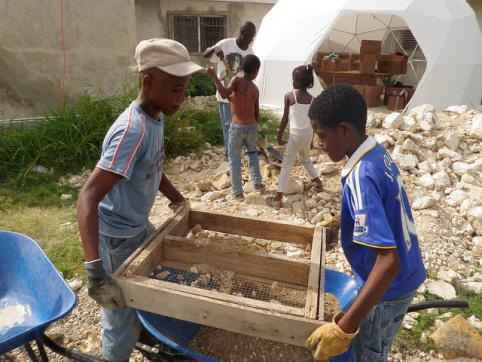The devastating January 2010 earthquake rapidly changed the context and landscape of the foreign aid scene within Haiti. Prior to the earthquake, Haiti already stood as one of the poorest countries in the Western hemisphere, which, in turn, brought many donors to the Caribbean Island. After the 2010 earthquake, Haiti shifted from receiving traditional development assistance to becoming a major recipient of foreign aid for activities that spanned a wide range of rehabilitation, reconstruction, and developments efforts within the country.
Donors pledged roughly $10 billion in response to the earthquake. Four years later, questions and skepticism remain as to where this money has gone and what results have been achieved. Lack of coordination is one of the key take-aways from the post-earthquake Haiti experience. Humanitarian assistance came to Haiti through official development channels, as well as through nonprofits and private foundations, further complicating tracking and coordination. Currently, over 10,000 nonprofits work in the country, giving Haiti the largest concentration of nonprofits per capita in the world.
The post-disaster spike in aid flows to Haiti intensified existing challenges such as duplication of efforts and the overshadowing of public and local initiatives. Edmond Mulet, head of the United Nations Stabilization Mission in Haiti from 2010-2011, argued that international aid is a hurdle to the country’s reconstruction and is stifling the development of public schools, clinics, and other infrastructure (NPR, Foreign Aid a Blessing, Curse For Struggling Haiti). While private sector projects have seen success, public and local initiatives continue to lag behind.
Given Haiti’s history of dictatorships and public corruption, international efforts have traditionally worked independently of or minimally with the government. This hindered the Government of Haiti’s involvement in foreign aid projects and undercut the accountability of foreign involvement within the country. As a result, many aid pledges were unfulfilled and lack of donor coordination contributed to inefficiencies on the ground and lost opportunities.
A wave of change is occurring as both international donors and the Government of Haiti are taking a critical look at how the past four years have progressed and identifying a viable long-term strategy for moving forward. For example, the Coordination Framework for External Aid for Development (CAED), housed in the Ministry of Planning and External Cooperation, is but one mechanism to better integrate reconstruction and long-term development efforts into the scope of the work of the Government of Haiti, replacing the role previously carried out by the Interim Haiti Recovery Commission (IHRC).
The recent push to bolster the capacity of the Haitian government has made it even more evident that the government needs a reliable system to track foreign aid flows in the country. With better tracking, information on who is funding what and where can be easily consolidated and analyzed so that the government and other actors can more effectively plan for Haiti’s development. Making this information transparent, publicly accessible, and easy to understand can also open the door to more collaborative analysis and more cooperation between stakeholders.

Source: Creative Commons
The Aid Management Platform (AMP) in Haiti is helping to achieve these goals. The online platform, created in 2009 by AidData institutional partner Development Gateway in collaboration with the Ministry of Planning and External Cooperation and supported by the United Nations Development Programme (UNDP), presents Haiti’s foreign aid information in a comprehensive, user-friendly format. The platform is one important step towards achieving the government’s “Build Back Better” initiatives.
AidData, supported by the United States Agency for International Development under the Higher Education Solutions Network Initiative, is currently working with the Government of Haiti to apply precise geographic locations to development activities captured in the AMP. Check back with us in the coming weeks for more information about this geocoding effort and for insights on how granular aid information can help Haiti “build back better."
